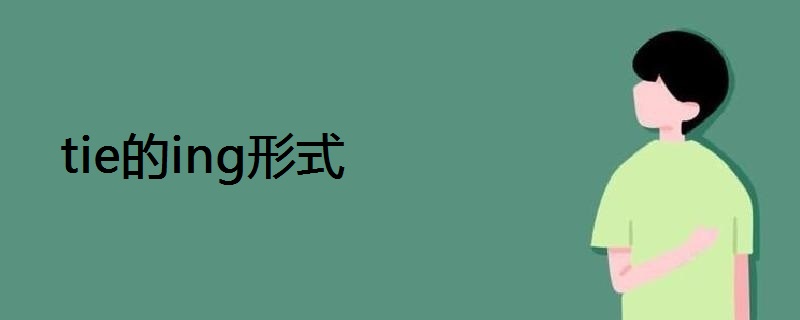tie的ing形式为tying。英语单词tie有两种词性,作动词时意为“系,扣,捆,打结;(使)关系密切;束缚,限制;打成平局”,作名词时意为“领带;绳子,金属丝;联系;束缚;轨枕;淘汰赛”。

tie
一、词态变化
复数:ties
第三人称单数:ties
过去式:tied
过去分词:tied
现在分词:tying
二、词汇搭配
【作动词】
tie a can to 摆脱,去掉,消除
tie a fly 装置蝇状钓钩
tie a knot 打一个结
tie a wreath 扎花圈
tie fast 系紧
tie hard 系紧
tie at the back 在背后打结
tie sth in a bow 把某物打成蝴蝶结
tie in wedlock 结为伉俪
tie into 猛烈进攻…,抨击…
tie sth to the post 拴在一根柱子上
tie sb to work 工作缠身
【作名词】
break tie 打破平局
choose a tie 挑选领带
cut ties 断绝关系
all ties 一切联系
beautiful tie 漂亮的领带
bow tie 蝴蝶结领结
cross tie 枕木
tie bar 系杆
in a tie 戴领带,(结果)不分胜负,(结果打成)平局
ties of blood 骨肉关系
ties of friendship 友好关系
ties to other nations 与其他国家的关系
ties with corporation 与公司的联系
三、双语例句
1.He began to tie his shoelaces.
他开始系鞋带。
2.He tied the package with a cord.
他用绳子把包裹扎紧.
3.Young children do tie a woman down.
幼儿确实会使一个女人受到束缚.
4.I don't want to tie you down in anyway.
我不想以任何方式限制你的自由.
5.Pets can be a tie when you want to go away on holiday.
要想外出度假时,宠物会成为牵累。










